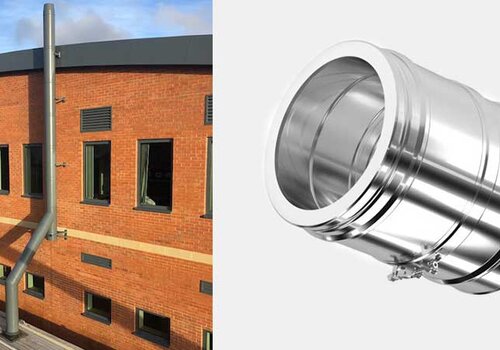Victoria Hospital, Kirkcaldy, Fife
The newly built Victoria Hospital required a challenging chimney installation, designed to service two biomass boilers, four diesel generators, three steam boilers and a CHP system.
Schiedel’s ICS and ICS 5000 flues were used, chosen for their versatility across a range of different heating systems.
Both systems are twin wall stainless steel with and insulated inner layer, suitable for gas, oil and biomass. ICS 5000 in particular works well with CHP and features a pressure gasket, TUV approved to 5,000Pa.
The appliances used were from
Hoval,
Froling Lambdamat,
Certuss Steam Generators,
Dresser Rand and
FG Wilson.
The flues were supported on a 19m high supporting structure, with CHP a late addition to the scheme after the main mast and original flues had been specified. Schiedel Chimney Systems integrated the additional flues into the overall structure in an economically and efficient manner.
For the most part, boiler and stove manufacturers will provide advice on flue sizing for their products or, like Schiedel, chimney and flue specialists should be able to provide chimney sizing, EN13384-1 & EN13384-2 have specialist online calculators to help with specifications for single appliances.
Existing chimneys and flues: Existing chimneys can be utilised for a new biomass system, in fact one of the big benefits of biomass is the fact it can be retrofitted to an existing oil or gas system, working with standard radiators or underfloor heating.
Where an existing chimney or flue is used, it must be inspected for deterioration. In order to maximise efficiency and ensure the correct diameter is being used for the appliance, a flexible or rigid chimney liner can be used, so long as the products have been tested and approved to EN1856-2 for the application.



